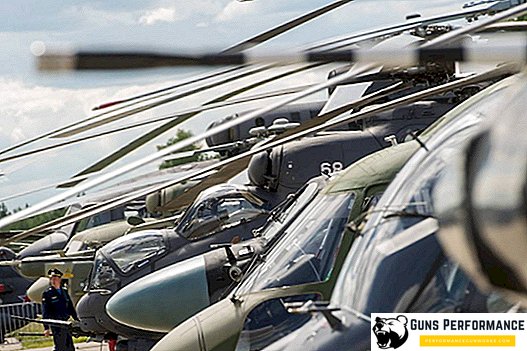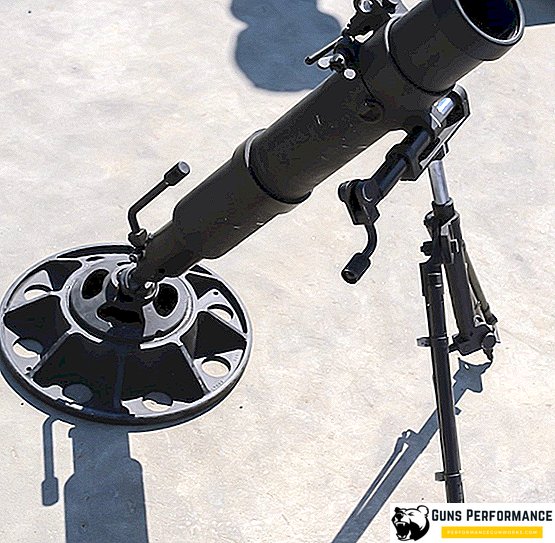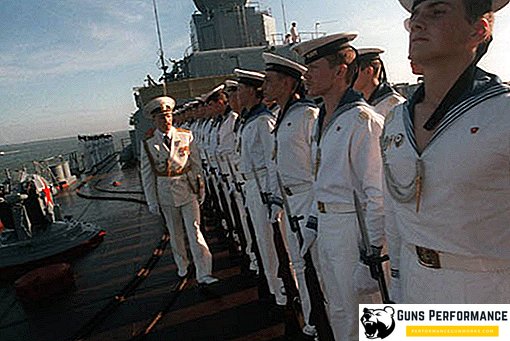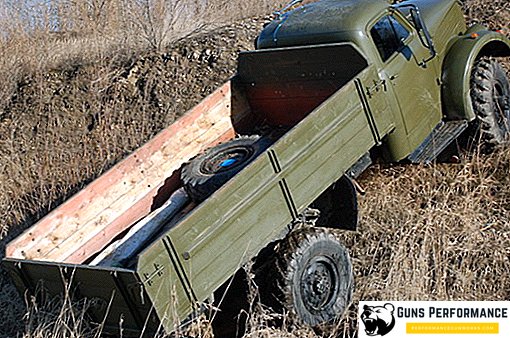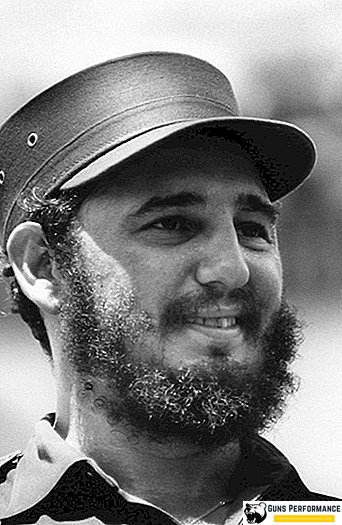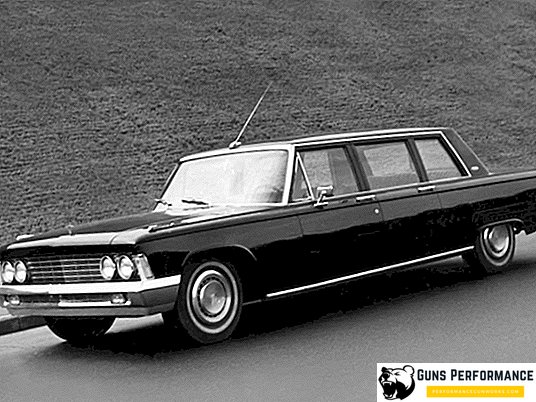“On the right flank, a dense mass of cavalry unexpectedly appeared, which began to descend rapidly from the hill. the horsemen rushing at full gallop were terrified. It seemed that the angels of death had escaped from the underworld, bringing death to all living things. Panic swept the Turkish military formations. th Turkish Army swept a wave of fear developed into a heart-rending cry of a single. Polish cavalry attack was relentless. Winged riders kerf in the battle formations of Turkish forces, causing around fear, terror and death. "
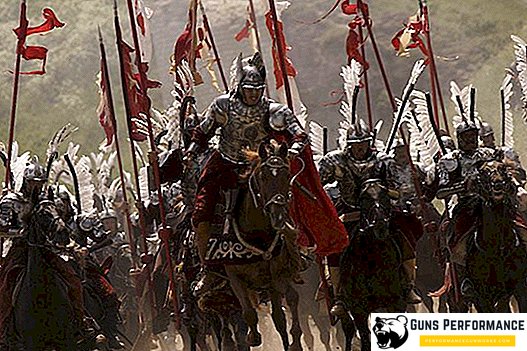
So in the chronicles of the military campaigns of the Polish king Jan III Sobieski, the Polish hussars attacked the orders of the Turkish troops in the battle of Vienna in the autumn of 1683.
Where do wings grow
After the famous Battle of Grunwald, Poland for two whole centuries became one of the largest and most powerful states of Central Europe. In the service of the Polish kings consisted of mercenaries from German principalities, Croats, Hungarians and Vlachs. Cavalry units were mainly represented by the irregular cavalry, which was staffed by Lithuanians, Serbian soldiers and Ukrainian registered Cossacks. The main division of the Polish cavalry were heavy spear companies, reinforced by lightly armed cavalry units from among Moldovans, Vlachs and Zaporizhzhya Cossacks. Talk about the harmonious organization of cavalry units in the army hierarchy of that time was not necessary. Only with the beginning of the XVI century, the Polish army began to be equipped with detachments of regular cavalry.
After the formation of Poland and the Lithuanian principality of the Polish-Lithuanian Commonwealth - a single state, the question arose of effectively protecting the southern and eastern borders of the new state. Mobile cavalry detachments were needed that were able to move quickly over a wide area. Permanent detachments of equestrians from among the local residents and mercenaries became part of a new military unit - the Defense of the Army. Cavalry units were recruited according to the principle of dialing; every twenty yards were to assign one rider to serve in the royal army. The principle of recruiting light cavalry gave the name to a new type of cavalry. The number twenty "hucz", translated from Hungarian means twenty, and the salary is called "ar". Accordingly, the hussar - the consonance of two words and became the common name of the new cavalry units.
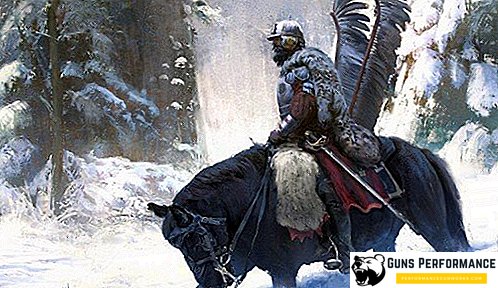
Hussars of the Polish-Lithuanian Commonwealth instead of the militia are part of regular cavalry. A variety of weapons, large numbers and skills of warriors have become the main distinguishing features of this kind of troops. After that, almost all the wars in the XVI-XVII centuries took place with the participation of light cavalry, which in the Polish army received a different development. Over time, winged hussars — heavily armed cavalry, which became Polish “know-how” in the history of the development of cavalry, appeared in the royal army.
Winged cavalry
Why winged? The point is not only that these cavalry units had high mobility. It's all about gear. The detachments of the regular Polish cavalry continued the traditions of Western European military art, where a heavily armed cavalry was given a special place. In earlier years, when the hussar, as the light Polish cavalry was also called, had armor and chain mail on it. An obligatory element of protective equipment was a heavy metal helmet and shield. The rider’s offensive weapon consisted of a long spike, a straight sword and pistols. During the reign of Stefan Batory, a military reform was carried out in the Polish army that touched all branches of the military. From that moment on, the Polish Hussars were finally transferred to the category of heavy cavalry.
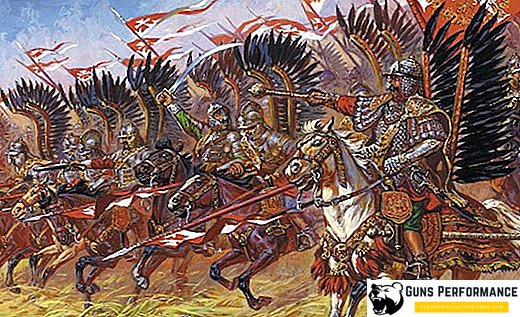
While in other European armies the hussars continued to perform the function of auxiliary units, Rzeczpospolita had troops of heavily armed cavalry, reminiscent of the Cuirassier units. Shields were abolished, and in its place came shells and metal bibs. Since the heavy cavalry in Poland was recruited mainly from noble families of the Polish gentry, medieval traditions continued to remain in military formations. In addition to armor and weapons, each rider tried to stand out with his suit and equipment. At first, animal skins worn over the armor were present in the uniform of the cavalrymen. A little later, after the clashes with the Ottomans, the Polish Hussars adopted their tradition of decorating themselves with bird wings. Attributes were made from goose or turkey feathers and were originally attached to the bow of the saddle, in front or behind. The decoration was small in size and was purely symbolic.
After the wings were made large and fastened behind the rider, this attribute was no longer just an ornament. The chroniclers, describing the history of military campaigns and battles of the XVI-XVII centuries, place greater emphasis on the psychological factor that occurred during the attack of the flying hussars. During the movement of the riders in a dense formation, feathers under the influence of air flow made specific sounds. It was noticed that the line of winged horsemen issued a loud rustle, resulting in the numbness of the horses of the enemy troops. The description of the attack of the Polish cavalry in the battle for the Austrian capital in 1683 is indicative. It was in this battle that the winged hussars even before colliding with the enemy with their appearance managed to undermine his morale.
To the note: In the composition of the Turkish army there were detachments "delhi" or insane, collected from the soldiers of the Balkan nationalities. They performed the tasks of assault detachments in the Turkish army. A distinctive feature of these warriors were the wings that were behind their backs. These units made an indelible impression on the Poles.
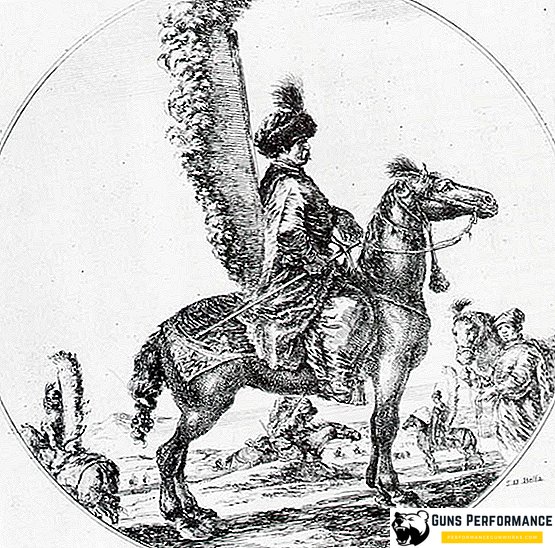
There are many other versions explaining the purpose of the wings. First of all, the wings on the back performed a protective function. A rider with wings over his head could not be caught with a lasso, a device which was often used to fight cavalry in the Middle Ages. It was also believed that when falling from a horse, the wings played the role of a shock absorber, softening the blow to the ground. These and other versions look weak in terms of combat effectiveness. Here it is necessary to take into account the propensity of the Polish gentry to parade. The appearance of the uniform and ammunition in those days, the Poles attached great importance. Polish cavalry can be considered a kind of cut of Polish society. The Polish elite went to the hussars, and in the sense that the natural desire to stand out among other branches of the military is quite understandable.
After the first successes on the battlefield, the wings firmly entrenched as a mandatory element of the equipment hussar units. Hussars were often compared with the angels of death, who sowed death, chaos and panic on the battlefield.
Technical equipment of winged riders
Instead of the former goals and objectives peculiar to light cavalry, the Polish Hussars played the role of a battle ram. The medieval tactics of combat use of heavy cavalry were restored. Acting in tight formation, Polish armored riders broke the battle formations of the enemy, inflicting the first most powerful and compelling blow on him. After such an attack, rarely a unit could quickly restore order of battle, and the soldiers came to their senses. In the 17th century, thanks to its heavy cavalry, the army of the Commonwealth was invincible in Europe. The strength of the Polish heavy cavalry was felt by the Turks, the Swedes and the Russian troops.
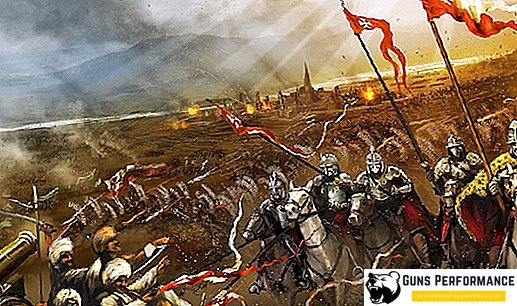
The hussars' khorugvi formed the backbone of the Polish army. The maximum number of hussar banners in the army of Polish kings was reached in 1621. Up to 8,000 heavily armed riders were an unbreakable military force. Even the appearance on the battlefield of firearms could not press the position of heavy cavalry. The presence of wings in the equipment of hussars was considered an anachronism, but for almost 150 years winged horsemen continued to be part of the active Polish army. Only in 1775 did the Polish Seym abolish hussar units by decree.
The strength of the Polish hussars was in their unity. Armored riders had peaks, the length of which reached 6 meters. With such a weapon, the cavalry strike was terrible. Already after the front ranks of the defenders were crushed, the hussars went over to work with pistols and broadswords. It was very difficult to resist such an onslaught, since the riders had fairly good defensive equipment. Most often, the hussars were dressed in chain mail. A little later, the Polish hussars received steel bibs - cuirasses for fitting out. The metal helmet, decorated with a feather visor and plume, complemented the warrior's protective uniforms. Arms and hands were protected by handcuffs and rags. In terms of technical equipment, the winged hussars were more reminiscent of medieval horse-drawn knights.
Finally
Polish hussars became winged cavalry in the literal sense of the word. Using a beautiful attribute as an element of equipment, the Polish heavy cavalry was one of a kind. Nowhere else, in any army were there cavalry combat units with similar equipment. It should be noted that the principle of recruitment and the high cost of uniforms made this type of cavalry few in number. Compared with the fact that the number of regular cavalry in the composition of the Russian army of Ivan III reached 30-40 thousand sabers, the heavy cavalry of the Polish army numbered no more than 8-10 thousand horsemen.

The development of military art, the improvement of combat tactics led to the fact that the uniform of military units became uniform. Disappeared the need for original items of equipment. The tactics of combat use of cavalry has changed. Uhlans and dragoons appeared in armies, playing the role of light flying cavalry. Hussars became elite units, acting as long-range intelligence and performing sabotage work.
The role of heavy cavalry in the armies was assigned to the cuirassiers. The appearance on the battlefield of artillery and rifles, nullified an awesome factor. A heavily armed horseman with wings behind his back became an excellent target for shooters. All this led to the fact that the winged hussars soon became an element of military history, giving way to the hussars of the traditional order and organization.


